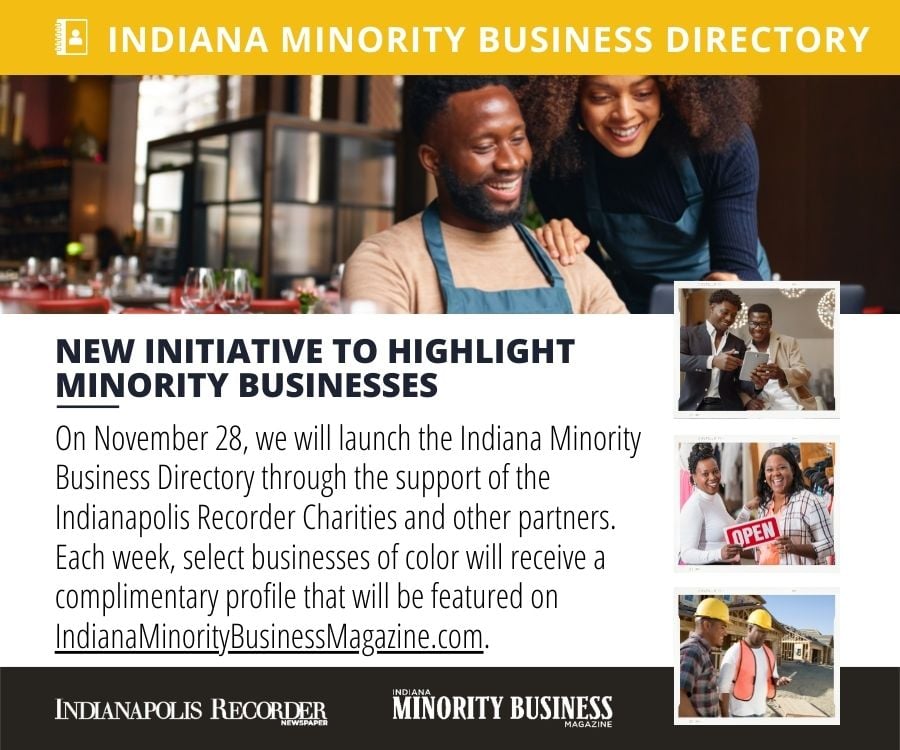In 2006, during the last major surge in homicides, then Mayor Bart Peterson assembled a 33-member committee of some of Indy’s best and brightest, in a variety of areas and expertise, to make recommendations on community crime prevention.
This time, during our current homicide surge, Mayor Greg Ballard has assembled a task force not to make crime prevention recommendations, but to “research and review targeted evidence-based models in Indianapolis and other cities that break down barriers to success and help African-American men achieve their professional, educational and personal goals.”
Co-chaired by Black Expo CEO Tanya Bell and Indiana Civil Rights Chief Jamal Smith, the task force’s 16 members begin meeting this coming Wednesday and must report by the end of October.
During past Indianapolis civic crises, the mayor of the day would convene Indy’s best and brightest to deliberate on a major community problem or issue.
Unfortunately, I’m disturbed that this task force is lacking Indy’s best and brightest. While the task force members are good people, I’m greatly disturbed at the lack of depth and expertise of a group charged with gathering info on breaking down barriers to Indianapolis Black men and boys achieving their “professional, educational and personal goals.”
It’s distressing that the task force contains no Black educators from any Indy school district. No school superintendents, university professors or researchers.
Worse, the task force contains no one from community centers or grassroots community based organizations who work directly with Black males.
While the Indianapolis Chamber of Commerce is represented, the only key Black organization represented is the 100 Black Men. As is typical of Mayor Ballard’s disdain of our community; representatives of other Black organizations were ostracized.
The paucity of veteran Indianapolis servant/leaders on the group is equally disturbing. There’s just two – Martha Lampkin, who’s white, and Sam Odle, the lone veteran African-American.
A quarter of the task force’s membership are folks whose qualifications and expertise is tenuous and dubious.
There’s Michelle Gough McKeown, an attorney with the state’s educational overseer agency CECI. An Internet background search shows she seems to have absolutely no experience in issues impacting Black males.
Based on her LinkedIn.com bio, Big Brothers Big Sisters CEO Dancey Palmer-Schultz has years of marketing and special event creation experience at her agency. But seemingly no direct experience in the complex issues impacting Black men and measuring their upward progress and mobility.
Then there’s the bizarre inclusion of working television journalists on the task force.
Past task forces in Indianapolis have, on occasion, included media representatives who’ve been members of management.
In my 40 years in Indianapolis civic affairs, never has a major civic task force included reporters.
Their selection raises severe ethical questions. But observing the proprietary of ethics has never stopped the mayor’s minions, unfortunately.
There are some 125,000 African-American boys and men in Indianapolis. Standing alone they’d be Indiana’s third largest city and 14th largest county. Their problems deserve a serious committee to examine the serious problems affecting them.
Sadly, I’m not optimistic about what this task force will accomplish. I shared the task force members’ names with a veteran community leader who’s worked at the grassroots with African-American men for years. He felt the task force was designed to help the mayor’s re-election; not produce any substantive recommendations.
Until I see otherwise, I tend to agree.
What I’m hearing in the streets
To hear Mayor Ballard tell it, the city’s economy is great, hiring and jobs are on the upswing. Yet the clueless top managers at Indy Parks mustn’t believe Ballard’s rosy ministrations. If they had, they’d thought long and hard about keeping the wages for city summer lifeguards at just above poverty level.
Lifeguards have a major responsibility. Lives are in their hands and you’d think they’d be paid accordingly.
So imagine my surprise when I learned in April that the city pays just $8 an hour for lifeguards. Well, the economy must be improving because prospective lifeguards have turned down the opportunity in droves.
Last year Indy Parks employed 246 lifeguards during the summer to staff their 19 pools. Several sources tell me that numbers are down drastically this year.
As the Parks Department saw their recruitment of lifeguards lag, they reviewed wages.
Late last Friday afternoon, Indy Parks sent out a desperate press release announcing lifeguard pay was boosted to $10 an hour.
Granted there’s a lifeguard shortage in many places from Cincinnati to Austin, Texas. But Indy’s overly quiet lack of going public with the urgency of the crisis is puzzling.
Every since Ballard fired long time, extremely competent Parks Chief Joe Wynns five years ago, Indy Parks has been on a downward spiral.
It’s puzzling that a mayoral administration that boosts cultural trails, Monon-type trails and bike lanes galore, has allowed many neighborhood and regional parks to deteriorate.
Indy Parks’ current director, John Williams, may go down in history as the worst director in the UniGov era. And that’s saying a lot after the disaster of Leon Younger in the Stephen Goldsmith administration and Ballard’s choice of Stuart Lowry.
If Mayor Ballard has run our parks system into the ground, can we trust him with other basic services? – from the winter’s abysmal snow removal, the cricket field fiasco, and unsafe streets.
See ‘ya next week.
You can email comments to Amos Brown at acbrown@aol.com.





